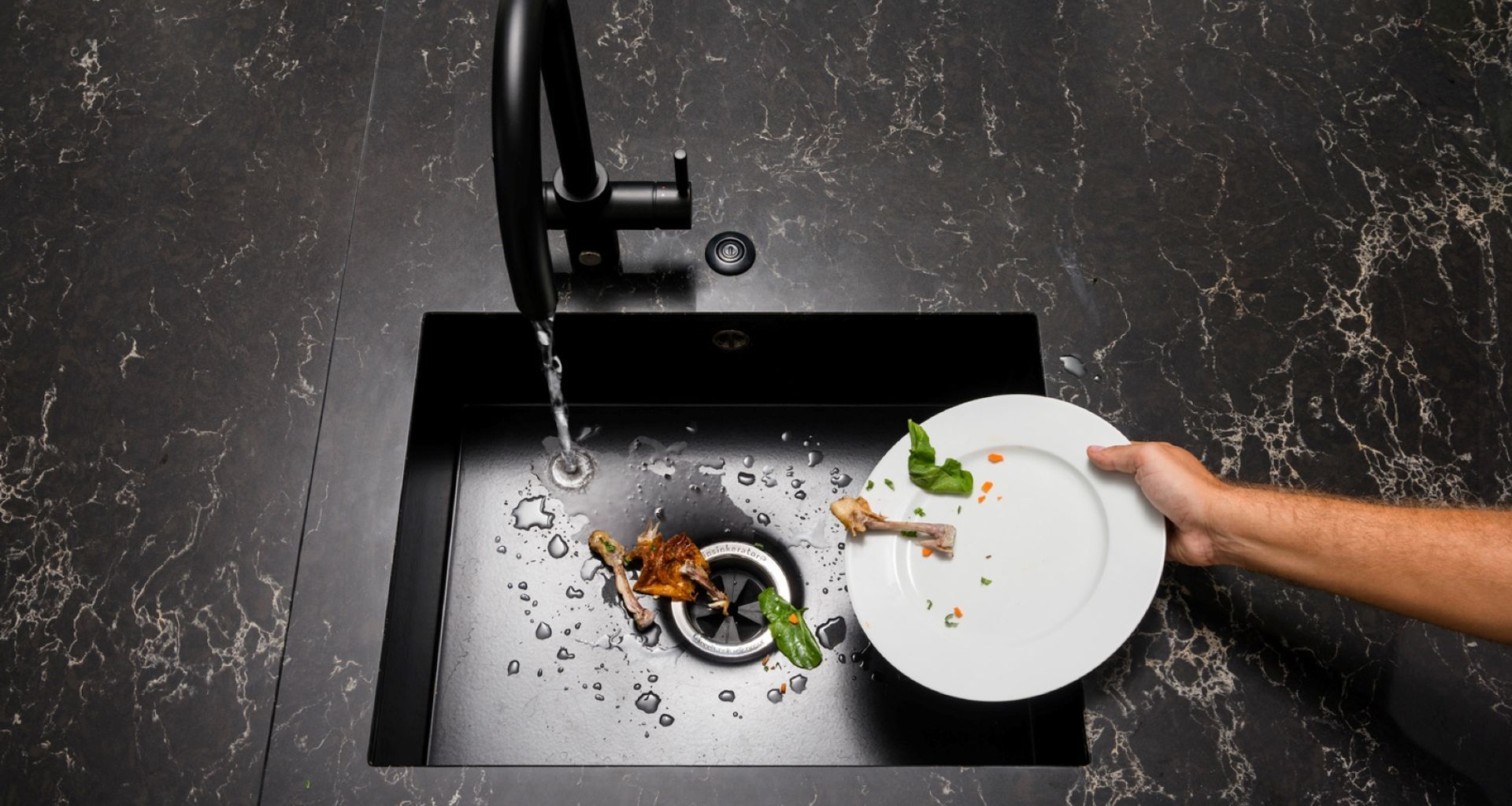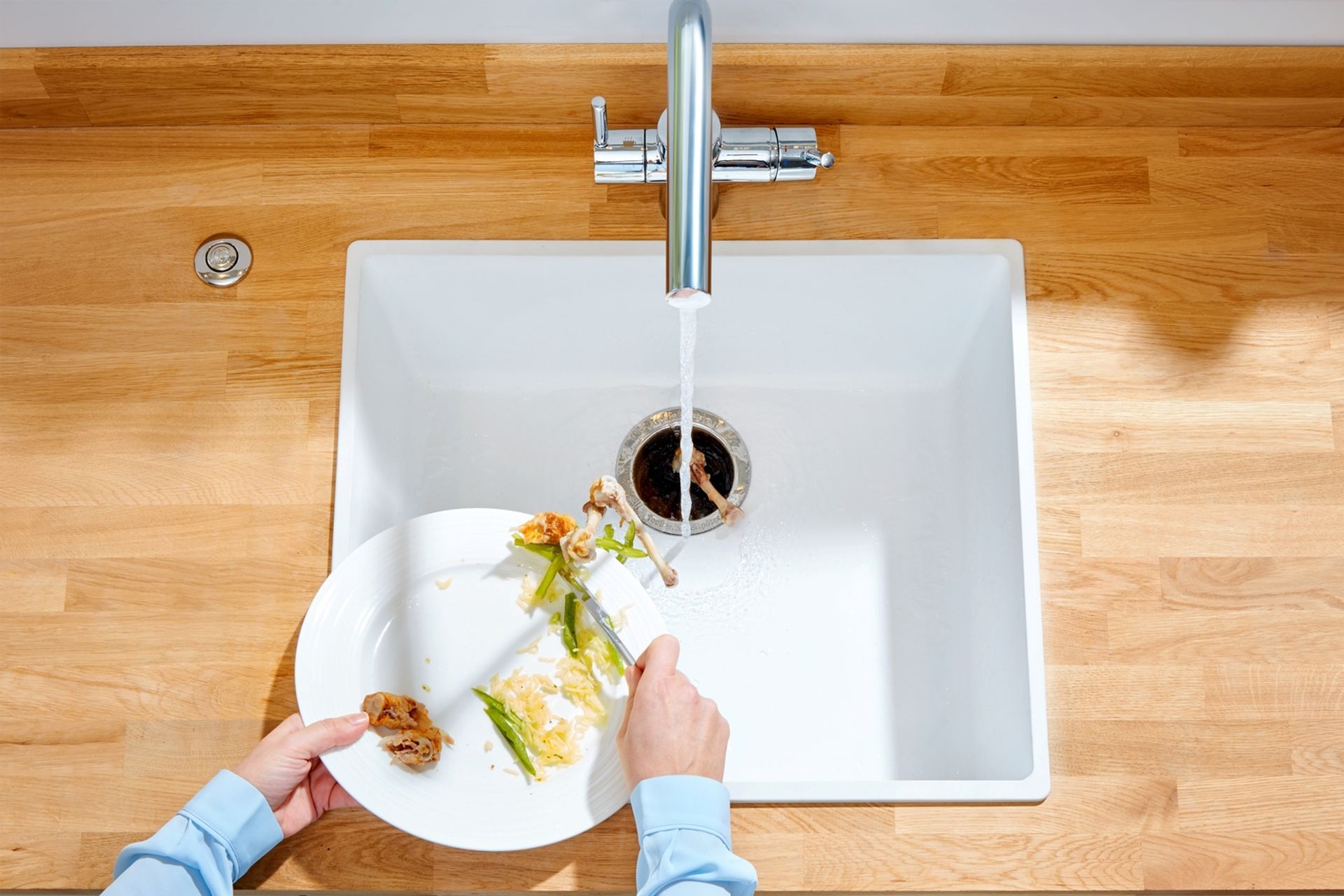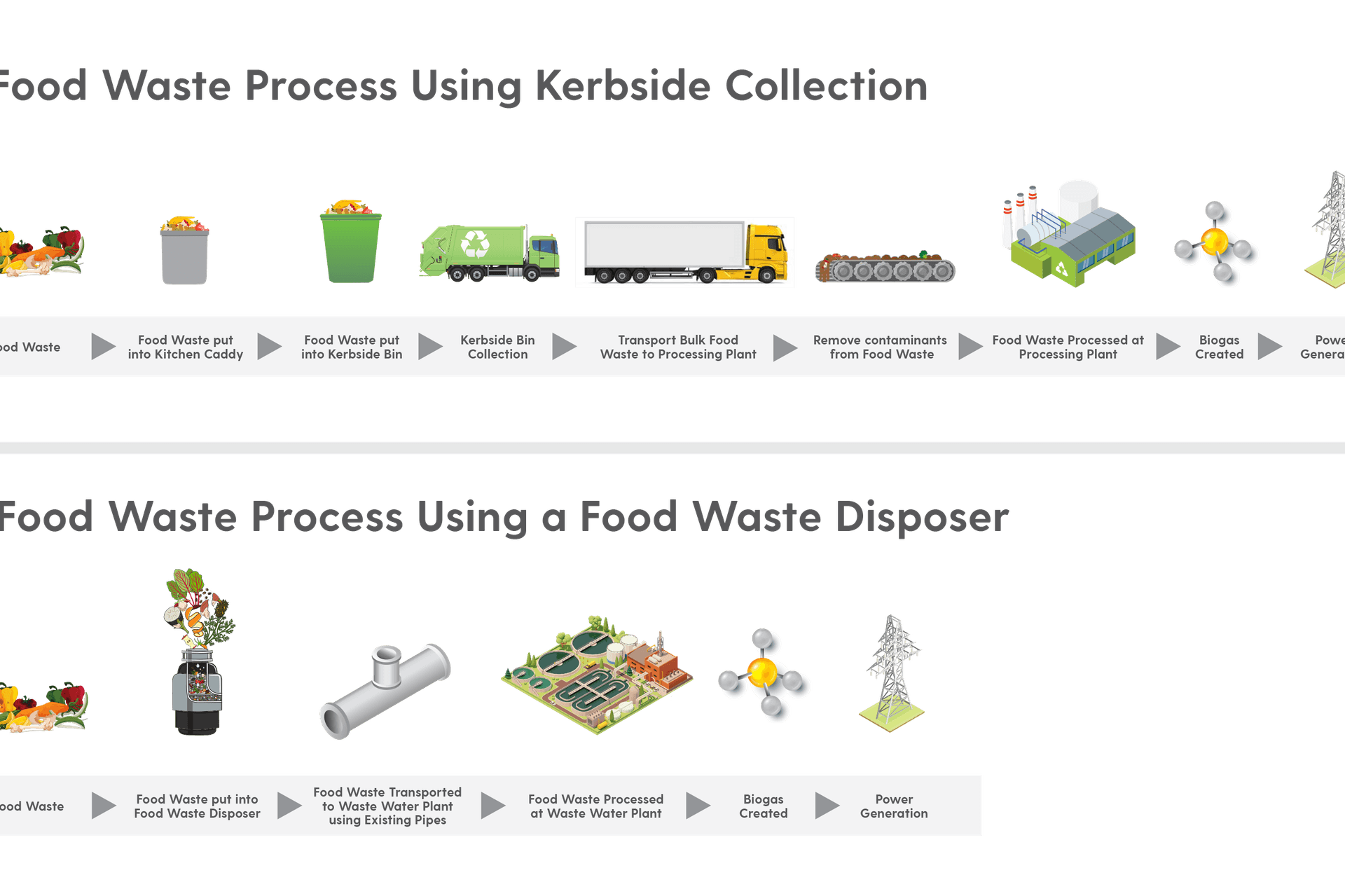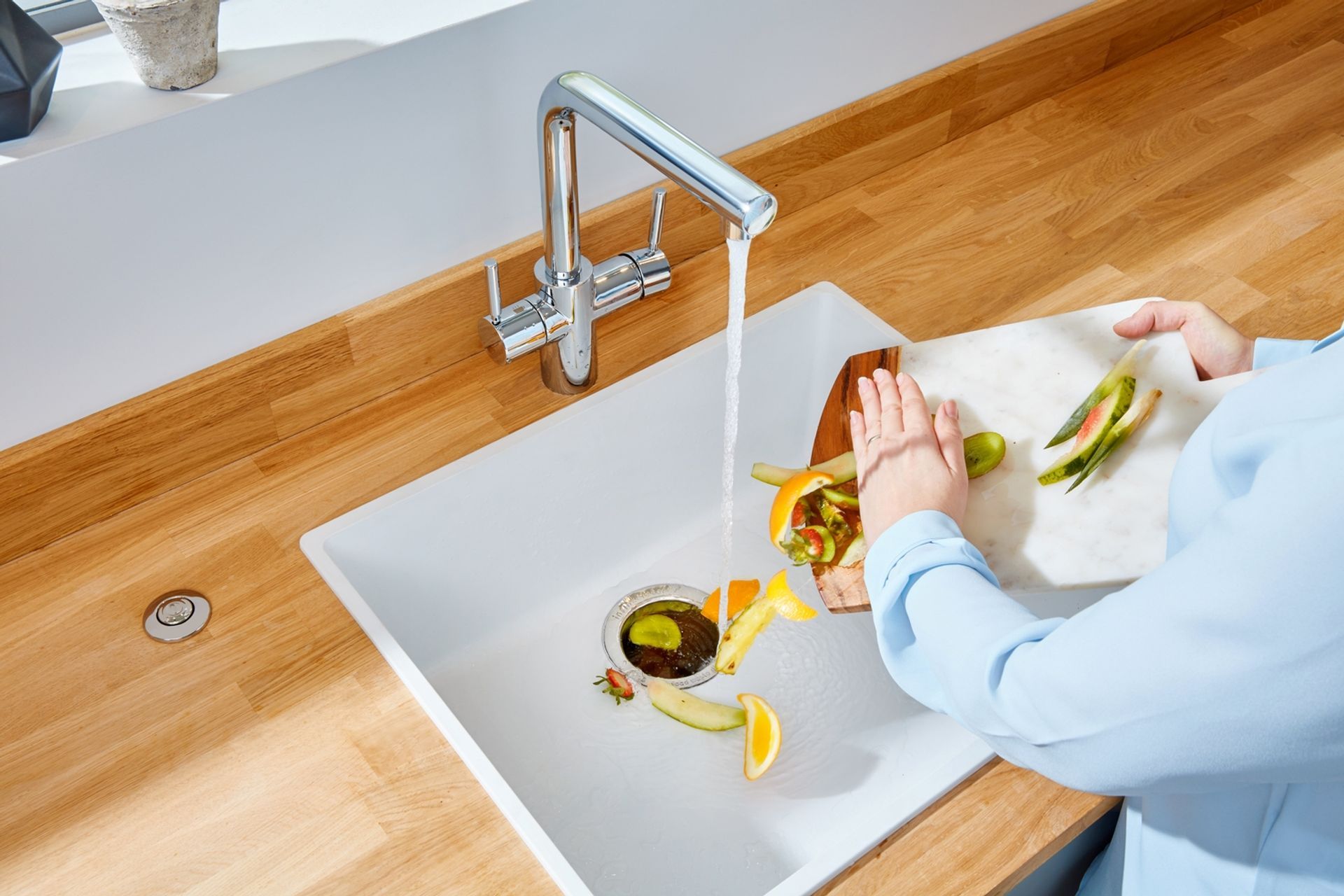Navigating your kitchen: what can (and can't) go down an InSinkErator?
Written by
06 November 2023
•
7 min read

There’s always been a bit of mystique about InSinkErator’s food waste disposers. Despite being an ever-present fixture in kitchens across New Zealand for over 40 years, people still don’t fully comprehend how they work and perform so well. Given the popularity and strong presence of these products, the untapped potential for current and future customers is exciting, redefining how it can be used in the home.
“InSinkErator invented the food waste disposer back in 1927 and has been the world leader ever since. New Zealanders appreciate the convenience and hygiene that a food disposer provides and we estimate that approximately 35-40% of New Zealand homes have a food waste disposer. This market penetration rate is only second to the United States,” says Tim Meyer, Marketing Manager at InSinkErator.
Starting with the basics: how an InSinkErator works
Before diving into the specifics of what can go down an InSinkErator (and what can’t) it’s important to first cover the fundamentals of the mechanics and technology involved which starts with its revolutionary motor.
“The food waste disposer has evolved over the years but the core difference in our products is the motor,” shares Meyer. “InSinkErator uses an 'induction' motor, which ensures high performance and long life. Most other food waste disposers use a 'permanent magnet' motor.”
Another innovative aspect of its design sits within its chamber. People often have the misconception that InSinkErator’s food waste disposers operate with high-speed spinning blades but the truth is much more refined and ingenious.
“It is a common fallacy that food waste disposers use blades to cut the food. Instead, lugs are used to create centrifugal force and push the food to the perimeter of the disposer chamber and through the grinding plates.”
Lastly, there are also different models of InSinkErators that have either a one, two or three stage Stainless Grinding System. The greater the number of stages in a grinding system, the more powerful and effective it is which impacts a number of things including what can and cannot be processed by the unit.
What can go down an InSinkErator?
As mentioned, the type of InSinkErator you have (or are looking at) will influence what can go down it. While there are some things that all InSinkErators can process, there are others only the more powerful models, like the Evolution 100 and Evolution 200 disposers can manage. These two models feature two and three stage Stainless Grinding Systems respectively, making them more powerful and effective.
The distinctions can be seen in the breakdown of disposable food waste below.
Things that can go down any type of InSinkErator
- Soft leftovers and food scraps: an InSinkErator can easily process soft food scraps.
- Cooked meat and fish scraps: again, easily disposed of by an InSinkerator.
- Soft fruit and vegetables (including peels): citrus rinds can help clean out the grind chamber and leave a nice scent.
- Small bones (like fish bones): fish bones will also help clean out the grind chamber.
- Bread and grains: these are generally soft and will crumble easily.
- Soft dairy products: small pieces of cheese and yoghurt are easily processed.
- Coffee grinds (in moderation): grinds can help eliminate odours but should be used in moderation to prevent clogging.
Things that can do down an Evolution 100 InSinkErator
- All of the above plus…
- Chicken bones and chopped bones: so long as they can fit down an InSinkErator, the Evolution 100 will process them.
- Raw meat: this is particularly useful given it is usually not suitable for compost beds.
- Seafood and prawn shells: this keeps unwanted smells out of your rubbish bins.
- Starchy foods: pasta, rice, potatoes and potato skins in particular, which can gum up the chambers of standard models.
Things that can go down an Evolution 200 InSinkErator
- 99% of all household food waste including…
- Stone fruit pips: even those that are especially hard like peach pips and avocado stones.
- Fibrous vegetables: celery and banana peels which can jam standard models.
- Eggshells: these can also cause pipes to clog in standard models.
“The multi-stage grinding systems provide additional grinding capabilities to handle difficult foods like cooked chicken bones, avocado stones and ferris materials like celery. If you intend on using your disposer for fruits, vegetables and table scraps, the standard and mid-range models are adequate for most. However, if you would like to be able to grind almost all types of foods, the Evolution range has more horsepower and better grinding abilities,” says Meyer.
Things that can’t go down an InSinkErator
Having covered what can be processed by the different types of InSinkErators, it’s important to highlight things to avoid for all models of InSinkErators.
- Grease, oils and fats: ideally, these liquids should never go down any sort of plumbing, InSinkErator or not, as they can coat pipes and lead to clogs.
- Non-food items: glass, metal, rubber, paper etcetera, are again examples of things that shouldn’t be put down a sink in the first place.
- Harsh chemicals: substances like bleach and drain cleaners can damage the disposal unit and are also bad for the environment when entering the wastewater system.
- Oyster shells: an unusually specific inclusion but the reason for this is their silicon base which can settle and clog up your plumbing system.
Maintenance and cleaning tips for your InSinkErator
One of the best things about InSinkErator’s food disposal units is that they are very low maintenance with no regular servicing required. This is great news if you’re looking to get one installed and one of the reasons they’ve been so popular in New Zealand.
The cleaning and maintenance requirements can be quite simply summed up with the tips below:
- Use your InSinkerator regularly and with a steady stream of cold water during and after you’ve used it.
- To clear the grind chamber of stubborn debris, put a dozen ice cubes into the unit with running water and operate it for 5-10 seconds.
- Baking soda can help freshen up the waste disposal unit while lemon (or any other type of citrus) can be ground to leave a refreshing scent.
- Never put bleach into your food waste disposer as this will potentially cause damage to the unit.
“The most common mistake when using a food waste disposer is insufficient water volume. Many people ‘jam’ food into the disposer and do not turn it on until it’s full. You should always run the water when using your disposer.”

A champion for convenience and the environment
While InSinkErator’s food waste disposers make an obvious case for themselves with respect to functionality and convenience, you might be surprised to learn that there are also environmental benefits when used as directed.
This can be clearly seen when you compare the food waste process of Kerbside Collection compared to using a food waste disposer.

“One question that is still a mystery to some people is ‘Where does your food waste go when it goes down the drain?’ Some people believe it’s flushed directly out to sea. This is not true. In most New Zealand cities, the broken-down food that goes down a disposer travels through pipes and arrives at a wastewater treatment plant in a matter of hours. There, the food waste (which is 75-90% water) is processed and the carbon from the food is used to power the water treatment plant.”
Learn more about InSinkErator’s products.


